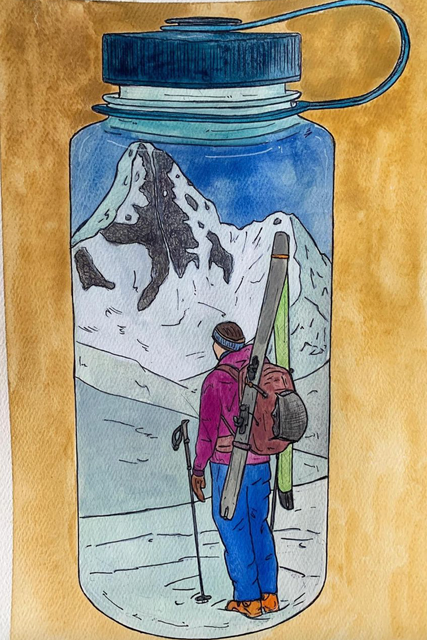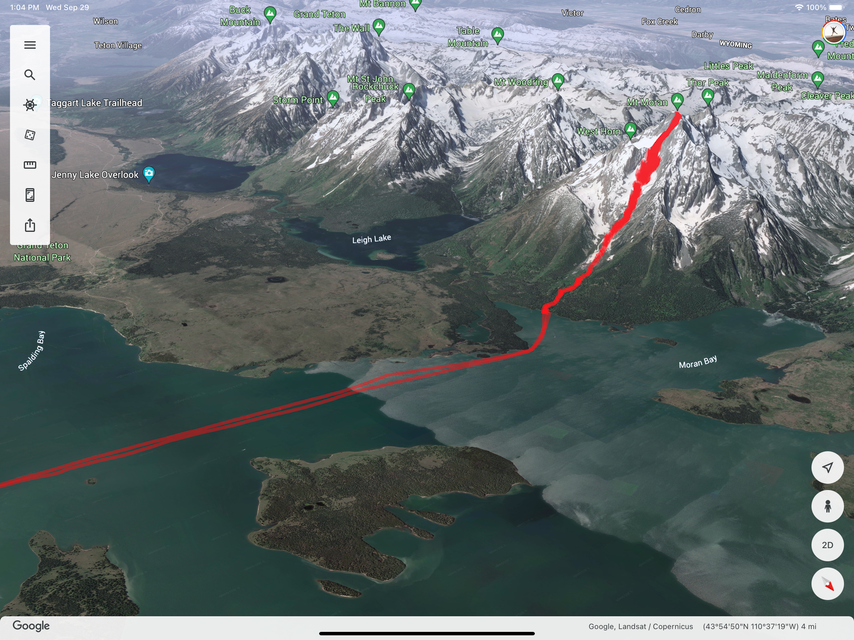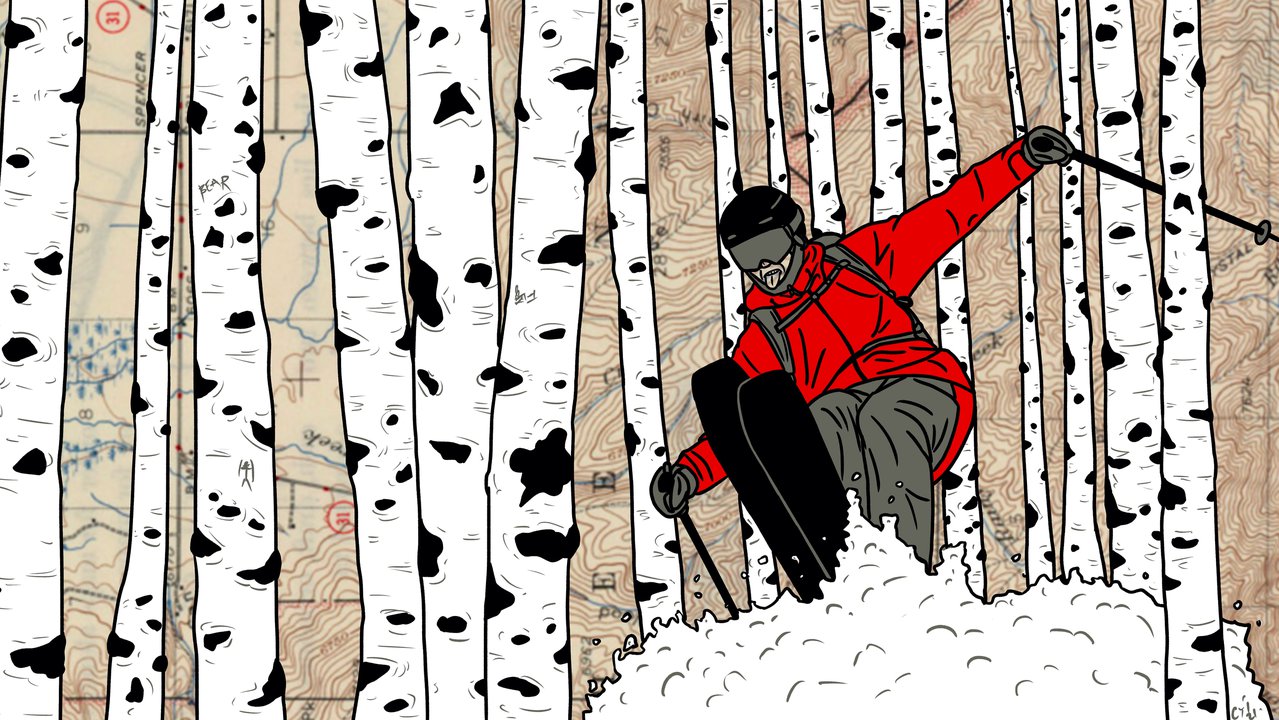The high peaks have a light dusting of snow, I’ve got an appointment to get my snow tires swapped back over, and the existential boredom of mud season looms large, so it must be time to start talking about preseason backcountry skiing prep again. If you’re part of last year’s COVID induced influx of new backcountry skiers, welcome! This is a freestyle skiing website, and it turns out, you can ski with free style in the backcountry.
If you just ordered your first backcountry setup, and are excited to take some classes and start earning some turns this year, awesome! It’s gonna be a blast. I’ve written a few pieces in the past to help folks who are coming from more of a park background get a comfortable start in the backcountry, so if you want to start at the beginning, here they are:
Here’s a piece I wrote about backcountry gear that might work well for typical NS’ers
Here’s a piece I wrote about education and protocol
With that said, the ghosts of shoulder seasons past have me thinking of ways to prepare for a winter of backcountry skiing that are productive, educational, and worthwhile. So, while we wait for the temperatures to drop and the snowpack to consolidate, here are a few recommendations to keep you from going stir crazy. Feel free to add your own in the comments.
Refresh your avalanche knowledge
This one is a no-brainer, but it’s always worth mentioning. The only thing better than spending a drizzly fall day curled up with a book and a hot drink is to make that book Staying Alive in Avalanche Terrain. It’s not exactly a riveting read, but it’s well-written, and a thought-provoking tome that’s worth another lap every year or two. I get something new from it every time through, and I think most other folks will as well.
Another, often overlooked piece of literature is The Avalanche Review.
While some articles are aimed at professional snow scientists and avalanche forecasters, I’ve found that I get a lot out of each issue. It’s a great way to keep up with the bigger conversations in the snow safety industry, and it’s a great starting point to trigger more in-depth research on avalanche related topics.
Finally, it’s a good idea to run through incident reports from last season in your normal touring areas. There’s something to be learned from every close call and fatality, and having a good grasp of historical avalanche problems is invaluable.
Recap last season
No matter if last winter was your first season backcountry skiing, or your fiftieth, there’s always something to be learned from a debrief with touring partners once you’ve got some separation from the season. So grab some beverages, and spend some time running through the highlights, the lowlights, and the learning moments from last year. I’ve found that the “Rose, Thorn, and Something you learned” formatt really helps me articulate vague feelings about days in the backcountry. Coming up with a positive, a negative, and a takeaway from bigger backcountry objectives is an efficient way to grow.

I like to work up from specific days to more general trends. So I tend to debrief a bunch of specific days, and then try to think through what they had in common to build an impression of the whole winter. Come up with a system that works for you. For me, ideally I’ll come away from a mud season debrief with a few actionable items. Examples include things like: “I’m going to work on communicating my unease more articulately this year.” “I’m going to make a habit of checking multiple weather sources before every tour.” “I’m going to check my pack and reload food and water at the end of every tour.”
This doesn’t have to be a dramatic, confrontational event. Instead have a conversation with the folks you ski with regularly about what did, and didn’t go well last year.
Explore terrain (both digitally and physically)
If you live close to the areas you regularly backcountry ski, fall is a great time to get out and do some bushwhacking. It’s very useful to have an idea of what your regular touring zones look like without snow. It helps reveal hazards that are easy to overlook in the winter. Note things like creek beds, and stumps or rocks in the landings of cliffs or pillows you like to hit. It’s a lot easier to check landings in the fall than to have to probe them once snow has fallen. Just be sure to be aware of hunters. Wear bright clothing and avoid hiking in hunting zones near dawn or dusk.
And, if you don’t live close to your favoured touring areas, you can still do some exploring with Google Earth. If you use Gaia or an equivalent map app, it’s easy to export a GPS track of a ski day, and then overlay it into Google Earth’s 3d view. I’ve found that some digital exploring can yield a lot of valuable context about the relative steepness and technicality of a line, tree coverage, the best approach and exit routes, and relative proximity to other terrain features. It’s a really easy way to gain perspective on the areas you like to ski in. It’s free, and it’s entertaining. And the more time you spend in map apps, the better you’ll be able to navigate when it counts.

Develop your favorite zones
Sometimes, hiking your favorite ski areas in the off season can reveal ways that they can be improved. If you’ve got the time and motivation, a little saw work in the fall can make a big difference once the snow has fallen. Usually, the best way to develop a ski lap is to start with clearing hanging deadfall. We’ve all run into cliffs that would go clean if they didn’t have a snag in the takeoff or landing, and exits that would be a lot easier if there were just a few less fallen logs across the track. Check with local land regulations, but in most areas, clearing deadfall is completely legal. A few hours with a hand saw can reap you big benefits down the road. If you need a new hand saw, I highly recommend Silky Saws. They’re packable, and cut very fast.
Refresh your gear
Yeah, I know, this one’s boring, but if you don’t do it before there’s snow on the ground, there’s no guarantee you’ll ever get to it. I like to start at the bottom and work my way up. That means going over my skins, picking out any stray pine needles that are stuck in the glue, and rubbing new glide wax into them.
Check your skis for core shots, and maybe hit them with a new coat of wax. Lord knows they deserve it. Check binding screws and release values. Often mounting screws like to back off a quarter turn or so, so it’s a good idea to re-torque everything. Touring boots have a tendency to drop fasteners at the worst times, so go through and check the tightness of any nuts and bolts on your boots. If they’re loose, hit them with some loctite and crank them down. Losing buckles in the backcountry sucks. Finally, if your boots tend to smell, now is a good time to hit them with an antibacterial spray. Make sure to remove your insoles, and spray them down too.
Now’s also the time to tech wash, and re-DWR any worn outerwear, as well as re-waxing leather gloves. You won’t have time to do any of this once the skiing’s good, so get after it now!
Articulate your goals
Finally, this one is optional, but I like to think through a couple of goals for every season. I’ve found that it’s helpful to have a few that are concrete, and a few that are bigger, abstract concepts. This season a few of my concrete goals are: Ski a local sidecountry zone before it becomes lift-accessed next year whenever it’s safe to do so. Run a skiblade possy down Glory in the spring. And finally to get more 360’s off natural hits in the backcountry.
My abstract goals include things like: Become better at skiing with beginners. Communicate my concerns better at home, before we even get to the parking lot. Be more aware of changing weather conditions. Be more open to changing plans on the fly.
Articulating goals helps hold us more accountable to complete them. So think about what you want from this winter, and then think about what you’ll have to do to get there.
Conclusion
Mud season can be long and boring, but it’s a whole lot less tedious when you’re taking concrete steps to improve at something you love. So how do you like to get a head start?


Comments